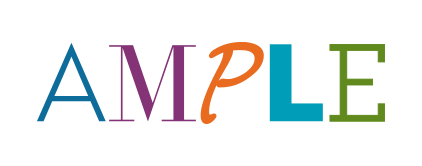As I was getting ready to begin Thanksgiving break, I received this exciting email:
Dear Contributors,
We are delighted to inform you that our Proposal for the Theme Issue on “Quantum Annealing and Computation: Challenges and Perspectives” has been approved for publication in Philosophical Transactions A.
Why am I so excited? Here is some background on the journal:
Philosophical Transactions of the Royal Society is a scientific journal published by the Royal Society. It was established in 1665, making it the first journal in the world exclusively devoted to science, and therefore also the world’s longest-running scientific journal. The use of the word philosophical in the title refers to natural philosophy, which was the equivalent of what would now be generally called science. In 1887 the journal expanded and divided into two separate publications, one serving the physical sciences (Philosophical Transactions of the Royal Society A: Mathematical, Physical and Engineering Sciences) and the other focusing on the life sciences (Philosophical Transactions of the Royal Society B: Biological Sciences).
As the journal was being formed, in a series of letters to Robert Boyle (yes, that Boyle, known as the first modern chemist), the first one was dated November 24, 1664:
…all ingenious men will thereby be incouraged to impact their knowledge and discoverys.
Issue 1 contained such articles as: an account of the improvement of optic glasses; the first report on the Great Red Spot of Jupiter; a prediction on the motion of a recent comet;…the final article of this issue was by Pierre de Fermat.
Now for the really fun stuff:
A Letter of Mr. Isaac Newton, Professor of the Mathematicks in the University of Cambridge; Containing His New Theory about Light and Colors: Sent by the Author to the Publisher from Cambridge, Febr. 6. 1671; In Order to be Communicated to the R. Society. (This is viewed as the beginning of his public scientific career.)
You may enjoy my post: What would Newton do?
“Philadelphia Experiment”, A Letter of Benjamin Franklin, Esq; to Mr. Peter Collinson, F. R. S. concerning an Electrical Kite (1753). (This was one of 19 papers he published in this journal, his most famous work.)
Michael Faraday published 40 papers here. His final paper in the journal, which was given as the Bakerian Lecture in 1857, Experimental Relations of Gold (and Other Metals) to Light. (This introduced the idea of metal particles that were smaller than the wavelength of light – colloidal sols or what would now be called nanoparticles.)
In On the Dynamical Theory of the Electromagnetic Field (1865) James Clerk Maxwell described how electricity and magnetism could travel as a wave and inferred from the velocity given by the wave equation, and by known experimental determinations of the speed of light, that light was an electromagnetic wave.
You may enjoy Sridhara Brahmana: Quantum Field Theory that I open with Faraday’s plea and Maxwell’s work.
Alan Turing‘s 1952 paper, On the Chemical Basis of Morphogenesis, gave a chemical and physical basis for many of the patterns and forms found in nature, a year before the structure of DNA was reported by Watson and Crick.
Of course, I would like to contest the hegemony ☺️ in Roll Over Turing.
There are others: Charles Darwin, Dorothy Hodgkin, Stephen Hawking (The Cosmological Constant, 1983), and Steven Weinberg.
What will our (with Anil Prabhakar at IIT-Madras and possibly others) paper be about?
Optimization with photonic wave based annealers.
Abstract: Photonic Ising Machines (PIMs) use energy minimization to solve NP-hard problems, offering alternatives to quantum annealing and simulated annealing. This is achieved by casting the problem as a quadratic unconstrained binary optimization (QUBO) where the final spin configuration in the Ising model is adiabatically arrived at as a solution to a Hamiltonian, given a known set of interactions between spins. We describe two such PIMs and compare their performance against classical and quantum solvers. The temporal multiplexed Ising machine uses the bistable response of an electro-optic modulator to mimic the spin up and down states, and is shown to effectively solve the MaxCut problem. In a second construction, a spatial photonic Ising machine convolves the wavefront of a coherent laser beam with the pixel distribution of a spatial light modulator (SLM) to adiabatically achieve a minimum energy configuration, and solve a number partitioning problem. We explore the possibility of scaling up to meet, and even surpass, other non von Neumann computing architectures.
Sound familiar? These are the winning devices of the 2020 Tayur Prize, co-incidentally awarded to the students at the 58th Convocation (held last weekend, on November 20, 2021, delayed from the usual summer time due to COVID) of IIT-Madras (with World Badminton Champion P.V. Sindhu being the commencement speaker).
Our first draft is due end of April 2022. For now, let me play Feeling Good by Nina Simone:
Birds flying high, You know how I feel
Sun in the sky, You know how I feel
Breeze driftin’ on by, You know how I feelStars when you shine, You know how I feel
Scent of the pine, You know how I feelI’m feeling good
Happy Thanksgiving!







Congratulations on this honor and your valued article.
Kool!
good show